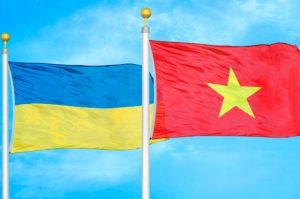
Ukraine’s economy after falling by 5.1% in 2020 will grow by 4% this year, with a slight increase in inflation (December from December) from 5% to 5.8% -6%, Citi analysts stated in the forecast of the global economy.
In their opinion, consumer spending will become the key growth driver against the backdrop of a planned 30% increase in the minimum wage from UAH 5,000 to UAH 6,500.
The experts expect the economy to recover to pre-crisis levels in the first quarter of 2022, generally assessing growth prospects in 2022 at 3% with inflation falling to 5.3%.
The bank forecasts that the National Bank will increase the refinancing rate by 50 b.p. in the second quarter of 2021, to 6.5% in order to balance price pressure caused by the rise in inflation. In particular, Citi expects the consumer price index to rise to 5.8% by the end of 2021.
According to the survey, the analysts predict the weakening of the hryvnia exchange rate by the end of this year to UAH 29.47/$1 with an average annual value of UAH 28.92/$1, and in the next year to UAH 30.67/$1 and 30.12 UAH/$1, respectively.
The analysts noted the institutional regression that occurred in 2020, but they are inclined to believe that the need to finance a large budget deficit will be an incentive for Ukrainian authorities to continue cooperation with the IMF. In their opinion, ensuring the independence of the National Bank and finding a way out of the situation that arose after the Constitutional Court had recognized a number of anti-corruption norms as unconstitutional will be of decisive importance.

Insurance Company MetLife (Kyiv) in 2020 made insurance payments in the amount of more than UAH 211.9 million, which is 27% more than a year earlier, according to a press release from the insurer.
At the same time, it is noted that the bulk of payments fell on situations related to the insurance protection of health of the company’s clients.
The company reports that in 2020, some 29 large payments were made, including 22 payments each in the amount of more than UAH 500,000, six payments in the amount of more than UAH 1 million and one payment in the amount of more than UAH 2 million. The number of insured events for which payments were made also increased by 14%.
In addition, during 2020, some 21,095 payments were made to the insured under life and health protection programs. Among the main reasons for payments in 2020, there were surgical interventions (6,028) and injuries (5,214) – they account for 53% of all appeals.
The company also reports that since the beginning of MetLife’s operations in Ukraine (2003-2020), the total payments to the company’s clients have exceeded UAH 857.845 million.
According to the industry rating Insurance TOP, during 2019-2020 MetLife is the constant leader in terms of the volume of insurance payments of all life insurance companies in Ukraine.
PrJSC MetLife was registered in 2002, it is a member of the international group of companies MetLife, Inc.

Ukraine and Vietnam will resume work on a free trade area agreement (FTA), Deputy Minister of Development of Economy, Trade and Agriculture, Trade Representative of Ukraine Taras Kachka has said.
“We have agreed to resume work on the FTA agreement with Vietnam. Under the best case scenario, this year we will enter a formal negotiation process,” he wrote on Facebook on Monday following the first meeting of the joint intergovernmental commission with Vietnam in 2021.
He also said that Ukraine and Vietnam are completing the conclusion of interdepartmental agreements on veterinary medicine and plant quarantine.
“These contracts are at the final stage,” Kachka said.
He said that by the end of 2020, the trade turnover between Ukraine and Vietnam grew by 22.5%, to $644.65 million, and Ukraine’s export to this country over the past year rose by 92%, to $184.5 million.
“A large share of imports from Vietnam are electronics and mechanical equipment… The lion’s share of Ukrainian exports to Vietnam are grains,” the trade representative said.
Kachka also said that business surveys show the interest of business in the FTA with this country. As for Vietnam itself, it is interested in industrial and scientific cooperation: from technologies in leather processing, fertilizer production and titanium mining to cooperation in the field of space and aviation. In addition, this is about industrial cooperation and projects for the supply of railway equipment, trucks, compressor equipment, aircraft and aircraft equipment, he said.

French sportswear brand Decathlon, part of the international Auchan Group, will open a new store in the Prospekt shopping and entertainment complex in the spring of 2021, expanding its network in Ukraine to three stores.
“Another bright opening of a new tenant, the French brand Decathlon, is planned in Prospekt shopping mall scheduled for the spring of 2021. This will be the first Decathlon residence on the left bank of Kyiv,” the Arricano company said in a press release.
According to the press release, the area of the new store will be about 2,000 square meters.
The first Decathlon outlet with an area of 2,500 square meters was located in phase one of Retail Park Petrivka in March 2019. The construction of the store lasted four months, the investment amounted to EUR 1 million. The second store, with an area of 3,000 square meters, was opened in November 2019 near the Lavina Mall.
In addition, Decathlon has launched an online store, and delivery is available to all regions of Ukraine. The Decathlon Drive service also operates in the store located in Berkovetska Street.
The first Decathlon store opened in 1976 in France. The brand currently has more than 1.5 stores in 56 countries. Some 99% of the products in the chain’s stores are products of their own brands.

Ukraine International Airlines (UIA) has warned about possible changes in the UIA PS 777/778 flight schedules due to the decision of the Israeli government to close Ben Gurion Airport in Tel Aviv effective from January 26 to January 31 as part of the fight against the spread of COVID-19.
The press service of the airline said on Monday, given the demand among passengers, the airline decided to launch an additional flight Kyiv – Tel Aviv – Kyiv. The flight will be available in the system immediately after receiving the slots.
“Passengers are kindly requested to follow the flight schedule on the KBP and TLV airport websites,” the airline said.

On January 25-29 this year, instead of the traditional Davos Forum, the World Economic Forum will host the Davos Agenda online event dedicated to the fight against the COVID-19 pandemic and the recovery of economies.
According to a posting on the WEF website, the Davos Agenda is a pioneering mobilization of global leaders to shape the principles, policies and partnerships needed in this challenging new context.
“The pandemic has accelerated systemic changes that were apparent before its inception… The time to rebuild trust and to make crucial choices is fast approaching as the need to reset priorities and the urgency to reform systems grow stronger around the world,” the WEF said.
Davos Agenda will address the impact of COVID-19 on the life of mankind, including the economic impact, the search for solutions to fight crisis, actions on climate change, the development of modern technologies, the future of the labor market.
The Davos Agenda will also mark the launch of the World Economic Forum’s Great Reset Initiative and begin the preparation of the Special Annual Meeting in the spring.
According to the list of Davos Agenda participants at the disposal of Interfax-Ukraine, seven representatives from Ukraine have registered for the event, in particular, from DTEK – CEO Maksym Timchenko, Chairman of DTEK Advisory Council Johan Bastin, Chief Innovation Officer at DTEK Emanuele Volpe and Advisor to CEO on International Relations Yulia Burmistenko, from Smart Holding – its founder Vadim Novinsky and CEO Alexey Pertin. In addition, Olha Stoliarchuk, a representative of the Kyiv Hub educational project, plans to take part in the event.